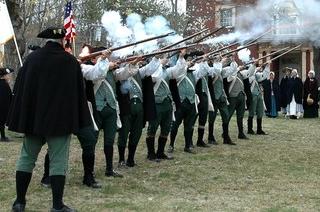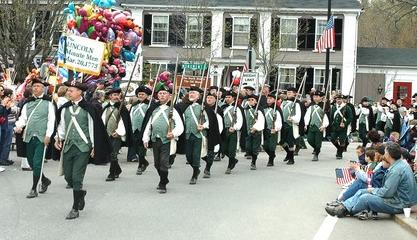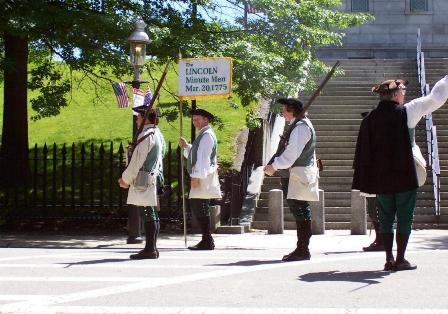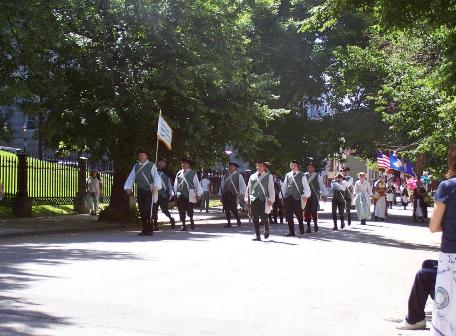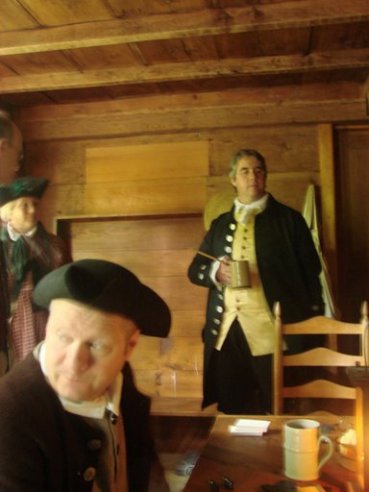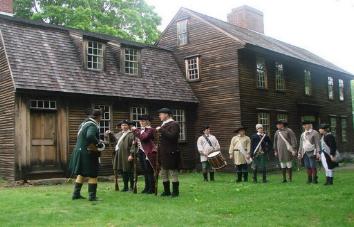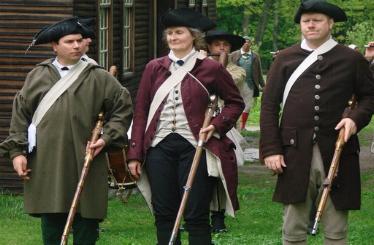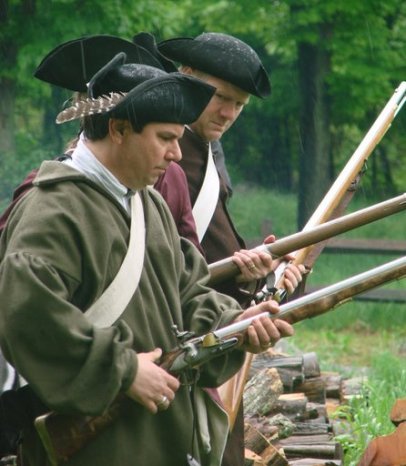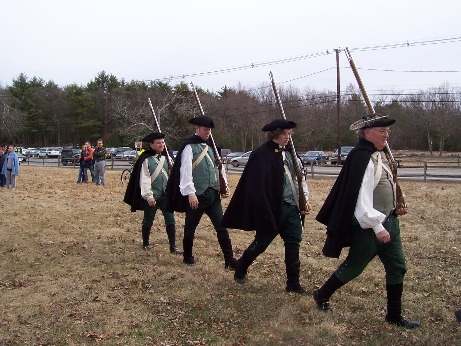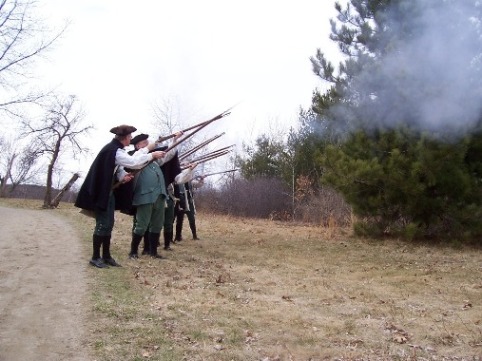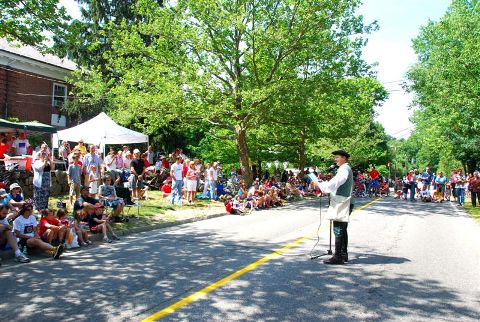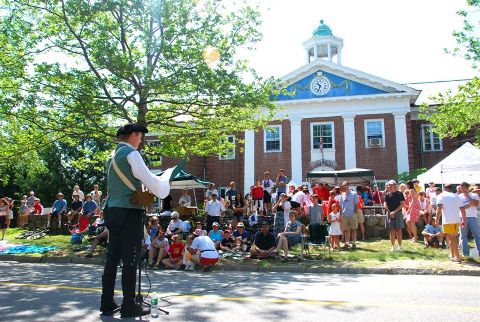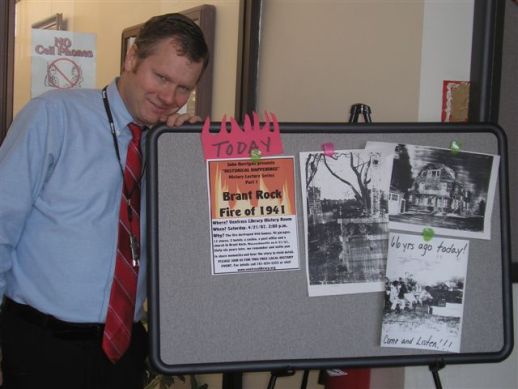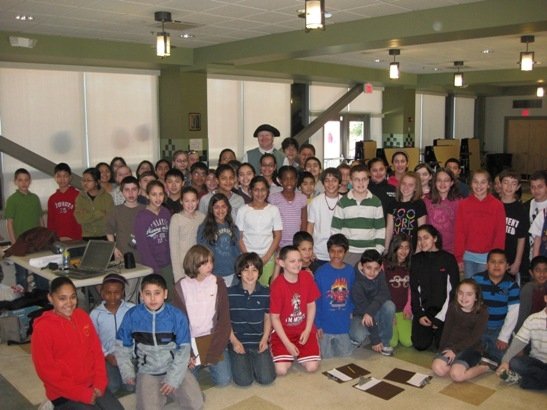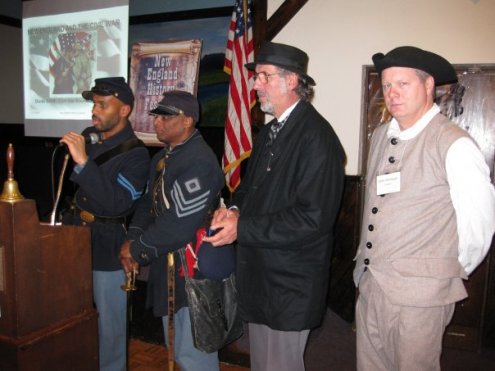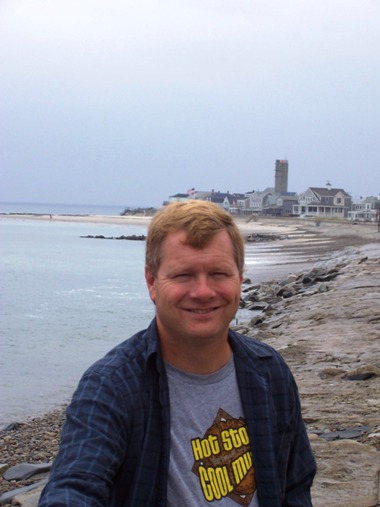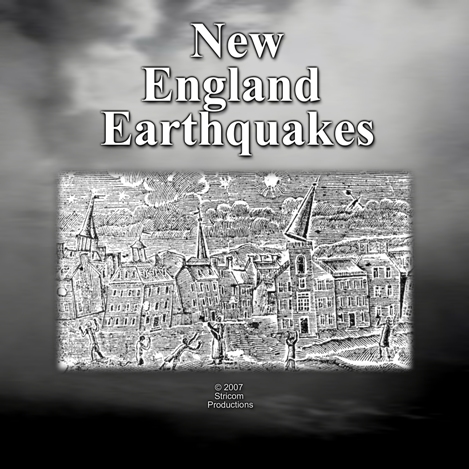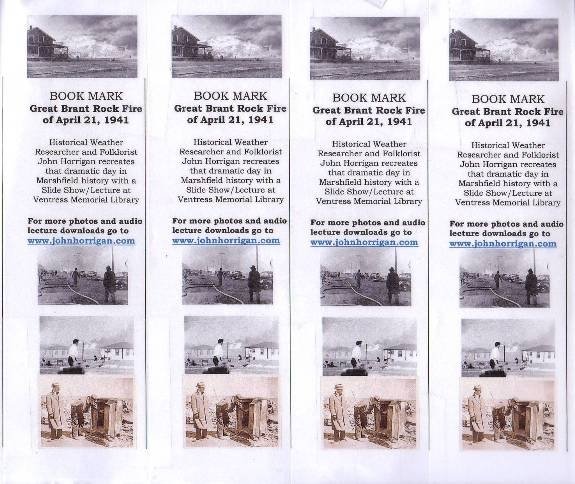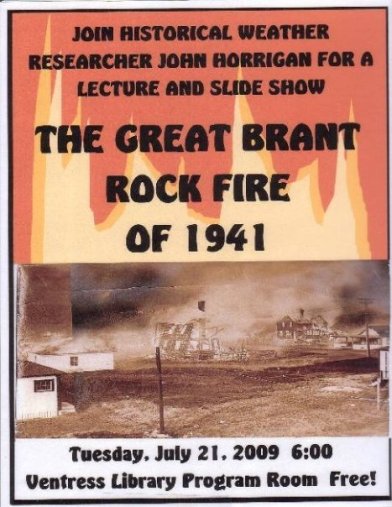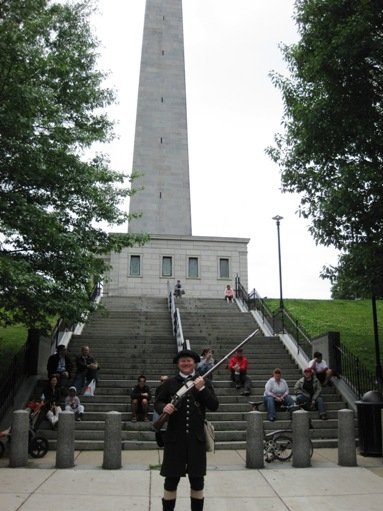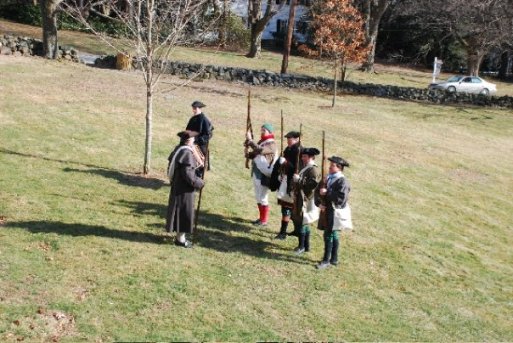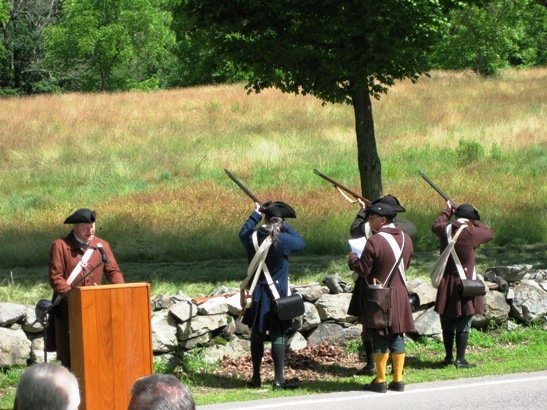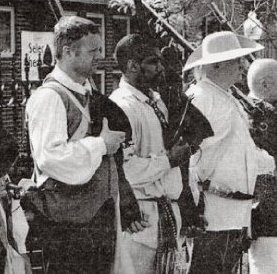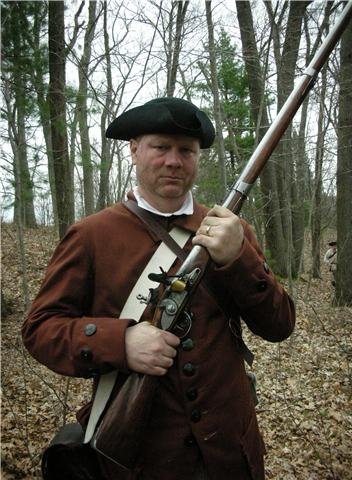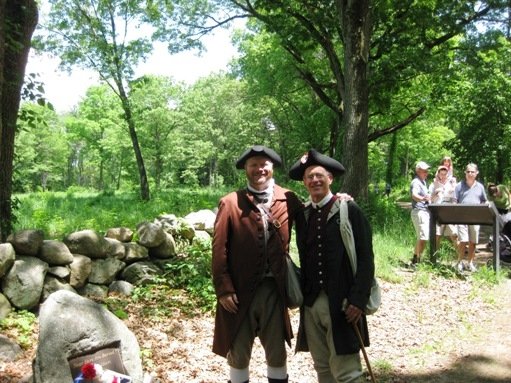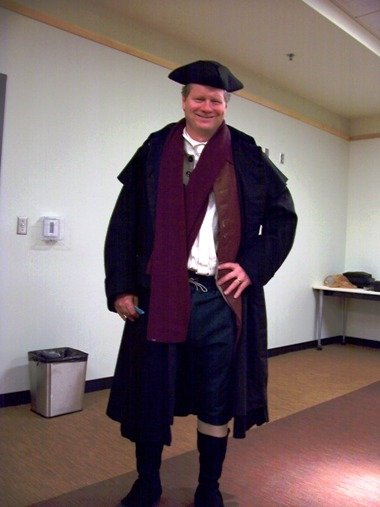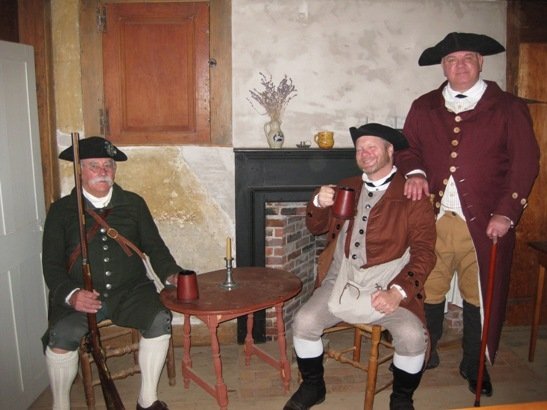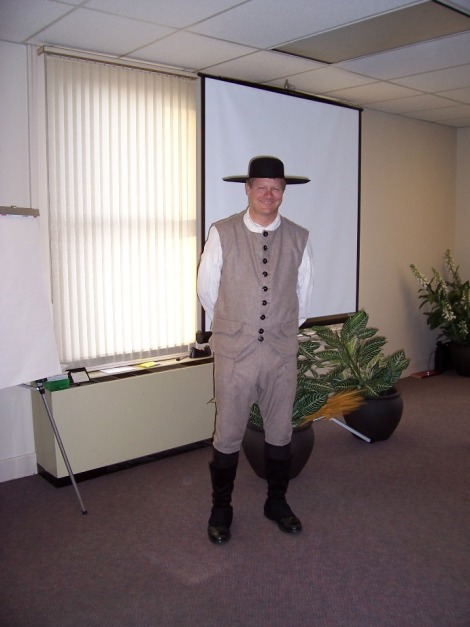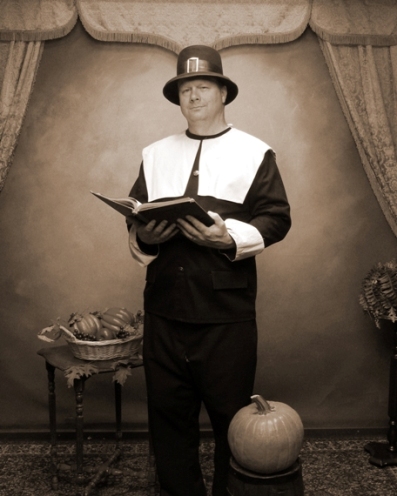JOHN HORRIGAN
HISTORICAL LECTURER
FIVE-TIME EMMY AWARD WINNER
"VANGUARD OF THE NEW POPULAR PUBLIC HISTORY"
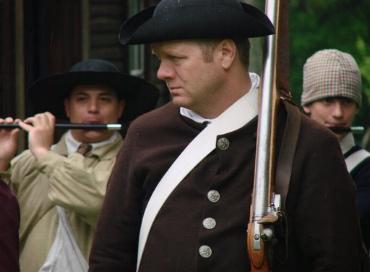
"NEW ENGLAND'S POCKET HISTORIAN"
"HISTORIST /FOLKLORIAN"
"A TIME TRAVELER DRIVING WITHOUT A LICENSE"
"CONTINUING WHERE EDWARD ROWE SNOW LEFT OFF"
HOST OF "THE FOLKLORIST" TV Show
BOSTON/NEW ENGLAND EMMY® AWARD WINNER - 2015
BOSTON/NEW ENGLAND EMMY® AWARD WINNER - 2015
BOSTON/NEW ENGLAND EMMY® AWARD WINNER - 2014
BOSTON/NEW ENGLAND EMMY® AWARD WINNER - 2013
BOSTON/NEW ENGLAND EMMY® AWARD WINNER - 2012
BOSTON/NEW ENGLAND EMMY® AWARD - 2016
"SO WELL-ROUNDED HE IS A SQUARE"...
"A ROGUE NOSTALGIAN"
"A LEADING HISTORICAL WEATHER AUTHORITY, GREAT FIRE CHRONOLOGIST, NEW ECONOMIST, PARANORMALIST AND CONSUMATE HISTORIAN OF 19th CENTURY ASTRONOMY"

Prolific Five-Time Emmy Award-Winning Folklorist lectures on Historical Weather, Boston History, New England History, Astronomy, Revolutionary War, Military History, American History, World History, Music History, Great Disasters, Shipwrecks and Unexplained Mysteries.
THE PILGRIMS
- The Mayflower
- The First Thanksgiving
- Pequot War
- The Courtship of Myles Standish
- King Philip's War
AMERICAN HISTORY
- Prohibition
- Abolitionists
- Suffragettes and Suffragists: Stone, Stanton and Anthony
- A History of American Riots
- Early American Natives
- Custer's Last Stand
- Great American Poets
- Early American Movie Stars
- Early American Radio Programs
- Great American Authors of the 19th Century
- Geronimo, Sitting Bull and Crazy Horse
- Wild Bill Hickok and Buffalo Bill
- American Gold Rushes
- Stage Coaches and the Pony Express
- The Industrial Age
- Cesar Chaves
- Native American Democide and Genocide
- A History of American Epidemics and Global Pandemics
- The Roaring Twenties
- A History of Spirits: Beer, Wine and Whiskey
- The Great Depression
- The Fifties
- 1968
- A History of World's Fairs
- Step Right Up: A History of the Circus
- The Vice Presidents
- P.T. Barnum
- The Lavender Scare and Frank Kameny
- Early American Roads and Highways
WORLD HISTORY
- History of the Ukraine
- History of South Africa
- History of Australia
- History of Russia
- Great English Kings and Queens
- Caesar, Antony and Cleopatra
- Ancient Rome
- Ancient Greece
- Ancient Egypt
- Ancient China
- A History of Agriculture
- The Tallest Buildings - A Chronology
- The Longest Tunnels and Highest Bridges - A Chronology
- Seven Wonders of the World
- Dinosaurs
MARITIME DISASTERS
- Titanic
- New England Lighthouse Storm
- Wreck of the Edmund Fitzgerald
- The Portland Gale
- The Halifax Explosion
- Andrea Doria
- The Wreck of the Royal Tar
- The Wreck of the City of Columbus
- Finest Hours: The Wreck of the SS Pendleton
- The Whaleship Essex
GREAT FIRES
- Great American Fires of the 17th, 18th and 19th Century
- Great Watertown Fire
- Great Brant Rock Fire
- Great Fires of Olde New England
- Great Fires of Boston
- The Cocoanut Grove Fire
- Great Fires of Nantucket and Martha's Vineyard
- The Great Hartford Circus Fire
GREAT DISASTERS
- Hindenburg
- Great Plagues
- Great London Fire
- While Rome Burns
- Disaster at the Circus: Fires, Train and Ship Wrecks
- Great Volcanic Eruptions
- Great Earthquakes
- Ready? Disaster and Emergency Preparedness
EARLY AMERICAN CONFLICTS
- The Deerfield Raid
- The French and Indian War
- The Alamo
- Native American Captives: Mary Rowlandson and John Billington
- Remember the Maine
- Pancho Villa
REVOLUTIONARY WAR
- The Boston Massacre
- The Powder Alarm
- The Boston Tea Party
- Paul Revere is Coming !
- The Grape Island Alarm
- Peter Francisco: Goliath of the American Revolution
- Liberty Ladies of the American Revolution
- The Battle of Bunker Hill
- Varnum's Continentals: African Americans in the American Revolution
- George Washington
- Deborah Sampson
- The Lost Eclipse Expedition
- The Wreck of the General Arnold
- Evacuation Day
- Benedict Arnold
- Yorktown
- Saratoga
- The Marbleheaders
- Alexander Hamilton
- Winters of the American Revolution
- Colonial American Women in Warfare
- New England's Dark Day
- Great Shipwrecks of the American Revolution
- Great Storms of the American Revolution
- Great Fires of the American Revolution
- Astronomy of the American Revolution
- Thomas Jefferson
- Shays' Rebellion
WAR OF 1812
- The Burning of Washington D.C.
- The War of 1812
- American Army of Two
CIVIL WAR
- Underground Railroad
- Freedom By Any Means: Robert Smalls, ‘Box’ Brown, Ellen Craft
- Great Storms of the Civil War
- Civil War Military Technology
- The Baltimore Plot
- Harriet Tubman
- Ironclads: The Monitor and the Merrimac
- Liar, Temptress, Soldier, Spy: Female Spies of the Civil War
- 54th Massachusetts Regiment: The Swamp Angels
- Gettysburg
- Frederick Douglass
- The Hunt for John Wilkes Booth
- Buffalo Soldiers
- Antietam
WORLD WAR ONE
- The Christmas Truce
- The Angels of Mons
- The Great European War
- The Battle of Jutland
- Lusitania
- Eddie Rickenbacker
- The Red Baron
- Weapons of the First World War
- Great Fighter Aces
- Harlem Hellfighters: African Americans in World War I
WORLD WAR TWO
- U-Boats off the New England Coast
- The Channel Dash
- The Wooden Horse
- Night of Broken Glass
- The Holocaust
- The Great Escape
- Robinson Crusoes of Wake Island
- Pearl Harbor
- Phantom Air Raids
- The Tuskegee Airmen
- 30 Seconds Over Tokyo
- D-Day
- The Battle of Midway
- Agent Tricycle: Dusan Popov
- Aerial Encounters: Foo Fighters / Scandanavian Ghost Rockets
- Without Help: African Americans in World War Two
- The Battle of the Bulge
- Japanese Balloon Bombs
- Night of a Thousand Bombers
- Hide, Dig and Dash (Channel Dash/Robinson Crusoes of Wake Island/The Wooden Horse)
- George Patton's Phantom Army
- The Los Angeles Air Raid
- Sink the Bismarck
- The Battle of Britain
- The Birdmen of Colditz
- The North African Campaign
- Okinawa and Iwo Jima
- Japanese Holdouts
- Unbroken: The Story of Louis Zamperini
- The Indianapolis
- Nagasaki and Hiroshima
MILITARY HISTORY
- Missiles of October
- Napoleon
- Hannibal
- Where Are My Legions?: Battle of the Teutoborg Forest
- The Crusades
- Alexander the Great
- Viet Nam
- End Run at Inchon: MacArthur in Korea
- Great Battles of Antiquity
- Waterloo
AVIATION HISTORY
- The Wright Brothers
- Dirigibles
- Supersonic: The Fastest
- She Flies: The First Female Pilots
- Early African American Aviators
ENVIRONMENT
- Rachel Carson
- Ansel Adams
- The First Environmentalists: Audubon, Muir and Powell
- Atomic Energy
- Pollution
- Climate Change
- A History of Famine
- A History of Mining
- Alternative Energy
EXPLORATION AND EXPANSION
- The History of Space Exploration
- Humankind in Space
- Amelia Earhart
- Lewis and Clark
- Von Humboldt and Cook
- Hugh Glass: The Revenant
- Shackleton
- Early Explorers
- Early North American Explorers
- The Quest for the South Pole
- The Quest for the North Pole
- Mount Everest
- "Dr. Livingstone, I presume?"
- Lost Expeditions
- Columbus
- The Vikings
- Daniel Boone
HISTORICAL WEATHER
- The Dust Bowl
- Great Storms of Nantucket and Martha's Vineyard
- The Year Without a Summer
- The Children's Blizzard and the Blizzard of '88
- Early American Tornadoes and Hurricanes
- Cold Fridays and Hot Saturdays: An American Survey of Extreme Temperatures
- Great American Floods and Droughts
- Strange Rains and Fish Falls
- Dark Days and Bright Nights: Great Fogs, Forest Fires and Auroras
- Middlesex Tornado
- The Worcester Tornado
- Great Hurricane of 1938
- Historic Storms of Olde New England
- Great New England Blizzards
- Great New England Floods
- Great New England Hurricanes
- Great New England Heat Waves and Deep Freezes
BOSTON and NEW ENGLAND HISTORY
- Earthquakes of Olde New England
- The History of Boston
- New England Lighthouses
- The Islands of Boston Harbor
- The Tallest, Longest and Highest in Massachusetts
- Great Northeast Blackout
- The History of Dedham
- The Boston Molasses Disaster
- Harvard Food Riots
- Norumbega: From the Vikings to the Totem Pole
- The Quabbin Reservoir
INVENTIONS and INVENTORS
- Edison vs. Tesla
- Henry Ford
- Alexander Graham Bell
- Great American Inventors
- African American Inventors and Scientists
- The First Internet: The Telegraph
- History of the Railroad
HISTORICAL CRIME
- Sacco and Vanzetti
- Ahoy Pirates!
- Gangsters of the Prohibition
- Jesse James
- Bonnie and Clyde
- Great Art Heists
- Great Bank Robberies
- Butch Cassidy and the Sundance Kid
- Gunfight at the OK Corral
- Gunfighters of the Old West
- Boston Strangler
- Jack The Ripper
- Lizzy Borden
- Mad Gasser of Mattoon
- The Brinks Job
- Spring-heeled Jack
BIOGRAPHY
- When the Rain Set In: Marylin Monroe
- Howard Hughes
- Houdini
- Edgar Allan Poe
- William Shakespeare
- W.E.B. DuBose
- Abraham Lincoln
- John F. Kennedy
- Martin Luther King
- Rosa Parks
- Pitcher, Ross, Barton and Anthony: Great American Heroines
- Joan of Arc
- Cesar Chaves
- Mother Jones
ART HISTORY
- Great Artists: Monet, Rembrandt, van Gogh and Picasso
- Michelangelo vs. Leonardo
MUSIC HISTORY
- The Day the Music Died
- Glenn Miller is Missing
- A Bing Crosby Christmas
- A Rat Pack Christmas
- Sinatra
- Favorite Christmas Caroles
- The Great Composers
- Beethoven
- Bach
- Franz Liszt: The First Rock Star
- Aaron Copeland
- Gunther Schuller
- Early American Composers
- The Big Bands
- Great Jazz Composers
- Jimi, Janis, Jim and Brian
- Early American Blues
- The Early Beatles
- Woodstock
- The British Music Invasion
- The Crooners
- Elvis
- The Beatles on the Ed Sullivan Show
HISTORICAL ASTRONOMY
- Backyard Astronomy: Planets, Stars, Constellations, Satellites and the Moon (evening/outdoor program)
- The Night the Stars Fell
- Lights on the Moon and Trans Lunar Phenomena
- Martian Canals (1877) and the Great Moon Hoax (1835)
- Great Eclipses
- Great Comets Over New England
- Great Solar Flare of 1859
- Great Meteor Showers
- Earth Under Siege: Earth-Approaching Asteroids and Doomsday Comets
- Great Transits of Mercury and Venus
- Great Astronomers: Galileo, Kepler and Copernicus
- Search For Extra Terrestrial Intelligence (WOW Signal)
- The Tunguska Incident
- The Star of Bethlehem
IRISH HISTORY
- The Broad Street Riot and the Ursuline Convent Fire
- Sunday Bloody Sunday
- The Easter Rebellion
- The Great Famine
- The Wreck of the Saint John
- Boston Irish Riots
- Michael Collins
- Yeats and Joyce
HISTORICAL ECONOMICS
- Booms, Bubbles, Busts, Depressions and Recessions: A History of American Financial Crises
- Tulipmania
- Magnates and Industrialists of the 19th Century
GREAT HOAXES
- Cottingley Fairies
- Ponzi Schemes
- Cardiff Giant
- I Buried Paul - Paul McCartney Death Hoax
- War of the Worlds
- Hoax Transmissions: Max Headroom, Captain Midnight and the Ashtar Command
- Mississippi Land Scheme Bubble
- Failed Prophecy and the Day the World Didn't End
- M.I.T. Pranks
SPORTS HISTORY
- Jackie Robinson
- 1972 Summit Series
- The Greatest Losers
- Early Football: Thorpe, Grange & Rockne
- The Game: Harvard/Yale Rivalry
- History of the Boston Braves
- History of the Boston Red Sox
- History of the Boston Bruins
- History of the Boston Celtics
- History of the New England Patriots
- The Golden Age of Boxing
- A History of the Summer Olympics
- A History of the Winter Olympics
- Ted Williams
- Babe Ruth
- Big Papi
- The Impossible Dream
- The Cincinnati Red Stockings
- The Great Roxbury Fire of 1894 and the South End Grounds
- Early American Baseball
- Baseball in 1941
UNEXPLAINED MYSTERIES
- Haunted
- Abominable Snowman
- The Money Pit: Oak Island
- The Toynbee Tiles
- Edgar Cayce
- The Bermuda Triangle
- D.B. Cooper
- History of Halloween
- Nostradamus
- Devil of Devonshire
- Witches
- The Bridgewater Triangle
- Bay State Phantoms
- Black Helicopters and Men in Black
- Bigfoot
- Abduction: Betty and Barney Hill
- The Allagash Abductions
- Cattle Mutilation
- Crop Circles
- The Gulf Breeze Sightings
- Roswell
- Mystery Air Ship of 1897
- The Loch Ness Monster
- Strange Creatures: The New Jersey Devil, Lizard Men and Chupacabras
- The Hopkinsville Goblins and the Flatwoods Monster
- Mothman
- Apollo and Space Shuttle UFO Encounters
- USO: Shag Harbour Incident
- Kecksburg Incident
- White House Ghosts
- Phantom Armies
- Area 51
- Lake Monsters
- The Gloucester Sea Serpent
- Sea Monsters
- Ambush At Ape Canyon
- Great New England Ghost Stories
- Spook Lights and St. Elmo's Fire
- The World's Greatest Ghost Photographs and Videos
- The World's Greatest UFO Photographs and Videos
- The Dover Demon
RELIGIOUS PHENOMENA and SACRED MYSTERIES
- Marian Apparitions: Garabandal
- Marian Apparitions: Lourdes
- Marian Apparitions: Fatima
- Blessed Virgin Mary Apparitions
- Padre Pio
- Incorruptible Bodies
- Miracles
- Relics
- Angels
- Martyrs, Prophets and Saints
- A History of the Papacy
- Biblical Archaeology
- Stigmata
- Ark of the Covenant
- Near-Death Experiences
- Reincarnation
- Pareidolia and Religious Imagery
- Shroud of Turin
- Noah's Ark
- The Holy Lance

REVOLUTIONARY WAR
"KNOX CANNON TRAIN AND EVACUATION DAY"
Description: Revolutionary War researcher and weather historian John Horrigan will retrace the steps of a historic military expedition that helped free Boston from British occupation during the Revolutionary War. Horrigan will present a slide show about the amazing engineering feat undertaken by the Knox brothers (Henry and William) in the winter of 1775-76. The brothers used 80 yoke of oxen to drag 59 cannons nearly 300 miles in 56 days, which culminated in a clandestine battery placement at Dorchester Heights overlooking Boston Harbor. This helped convince the British to evacuate Boston on March 17th, 1776. John will expound upon a freak 'gullywasher' that hit Boston early on March 6th, 1776 and consequently thwarted a planned British counter-attack on Dorchester Heights. Because his marines were ill from the rolling sea conditions, General Howe then decided to evacuate his 7,000 troops from Boston and relocate them to Nova Scotia. John has a version of this lecture ("Evacuation Day For Kids") that is a good learning tool for students ages 9 through 15 as it gives a broad and basic background of the American Revolution. Listen to the speech in the audio archive at the following link.
CLICK HERE FOR MORE DETAILS ABOUT THE KNOX EXPEDITION AND EVACUATION DAY

"WINTERS OF THE REVOLUTION"
Description: The ability of George Washington's Continental Army to endure harsh winters affected the outcome of several Revolutionary War battles and ultimately changed America’s destiny. Join historical weather researcher John Horrigan as he presents a captivating lecture that describes the severe winters (and their subsequent historical impact) from 1770 through 1783. Mr. Horrigan will discuss the bleak conditions encountered during the Crossing of the Delaware, the Arnold Expedition and the Encampment at Valley Forge. Many other historic winter events relative to the American Revolution will also be explored. One of the key weapons that the colonials used as an advantage against the British - was the weather.
CLICK HERE FOR MORE DETAILS ABOUT THE WINTERS OF THE REVOLUTION

"NEW ENGLAND'S DARK DAY"
Description: “It was a dark and stormy night…” So begins the 1830 Bulwer-Lytton novel, Paul Clifford. 50 years earlier it was a dark, if not stormy at midday in parts of New England as a mysterious darkness fell over New England on the late morning of May 19th, 1780. Candles were brought out at lunchtime and churches were filled as many New Englanders thought that the Day of Judgement had arrived. Was it retribution for the disruptions of the American Revolution raging at the time of the darkening? Some Tories thought so. Was it a natural meteorological phenomenon, explicable in the terms of modern science or was there a more mundane explanation? Join historical weather researcher John Horrigan for a presentation about “New England's Dark Day” as he reveals the definitive explanation of one of the most strangest meteorological events in America’s History. He'll also present a chronology of dark days throughout world history, including New England's little known Dark Day of 1819 and Detroit's Dark Day of October 19th, 1762.
CLICK HERE FOR MORE DETAILS ABOUT NEW ENGLAND'S DARK DAY

"GREAT SHIPWRECKS OF THE AMERICAN REVOLUTION"
Description: New England folklorist John Horrigan will present a chronology of great shipwrecks that took place during the American Revolutionary War. The weather along the American Atlantic coast did more damage to British war ships than any naval engagement during the Revolutionary War. Beginning with the Gaspée Affair of June 9th, 1772 and the burning of the Diana, Horrigan will provide a brief chronology of American, French and British ships that were wrecked in battle, scuttled by privateers or lost to severe weather. He will provide a detailed account of the destruction of the HMS Somerset, a massive 70-gun ship that was battered by two gales in 1778 and subsequently ran aground at Peaked Hill Bars off of Cape Cod. Most of its sailors were taken prisoner and forced to walk from Provincetown to Boston! He'll also recount the harrowing ordeal of the American man-of-war General Arnold, that ran aground on a sandbar off of Plymouth on Christmas Eve of 1778. Many lives were lost when American crewmen literally froze to death in what is now tagged as "Magee's Storm". Horrigan will give an hourly account of this tragedy, speak of the Independence Hurricane and the Triple Hurricanes of 1780, and conclude his talk with the loss of the Dutch ship Erfpins.
CLICK HERE FOR MORE DETAILS ABOUT GREAT SHIPWRECKS OF THE REVOLUTION

"GREAT FIRES OF THE AMERICAN REVOLUTION"
Description: New England folklorist John Horrigan presents a slide show about the “Great Fires of the American Revolution”. Horrigan maintains that the burning of several cities and towns ignited the American Revolution and would eventually spark the Continental Army on to victory. As the Minutemen and Colonial Militia were assembling on Punkatasset Hill, they saw smoke emanating from their unprotected village of Concord, Massachusetts. The men were convinced that the British raiding party was burning down their homes. This misinterpretation of a smoke pall would be converted into a rallying call to action by Adjutant Joseph Hosmer as he cried "Will you let them burn the town down?” His encouragement helped impassion the Colonials in their route of the British at the Battle of Old North Bridge. John will discuss several other Revolutionary War conflagrations as well, including the burnings of Charlestown, Falmouth, Norfolk, New London, New York and Charleston.
CLICK HERE FOR MORE DETAILS ABOUT THE GREAT FIRES OF THE REVOLUTION
 EPIC STORMS
EPIC STORMS
"GREAT HURRICANE OF 1938"
Description: The surprise hurricane of September 21st, 1938 raced up the Atlantic Seaboard at 67 MPH (with a record low air pressure) and left residents of the thickly populated Northeast Coast with no time to react. This maelstrom devastated Long Island, Connecticut, Rhode Island and Western Massachusetts. 11 states and 2 countries felt the wrath of this unforgiving meteorological monster. While many victims drowned, some suffered tremendous property losses due to the storm surge. Entire landscapes along the exposed southern New England coast were scoured, eroded and decimated. Some vicitms were swept out to sea, never to be seen again. There were unbelievable acts of heroism, cowardice, kindness, selfishness and poor judgement. Actress Katherine Hepburn lost her family home in Connecticut while others lost their livelihood to the storm. New England folklorist and weather historian John Horrigan will take you from the mariner's unheeded warnings through the botched forecasts of the National Weather Service to the blistering winds of a Category 3 hurricane with a driving narrative about "GH38". If you experienced this storm, you are encouraged to attend this lecture and talk about your own personal recollections.
CLICK HERE FOR MORE DETAILS ABOUT THE GREAT HURRICANE OF 1938

"THE PORTLAND GALE"
Description: Join Weather Historian John Horrigan as he recounts the tragedies brought by the Portland Gale. On November 26th, 1898, the steamship SS Portland left India Wharf in Boston, Massachusetts for Portland, Maine on a regularly scheduled run. She never made it to port. None of the 192 passengers and crew survived the massive storm that wreaked havoc on New England's coast — a storm that was later dubbed "The Portland Gale". The storm that struck the coast of New England on November 26th and 27th, 1898 formed when two low pressure areas merged off the coast of Virginia and travelled up the coast. At its peak, it produced a storm surge of about ten feet in Cohasset harbor and wielded hurricane-force winds in Nantucket. The storm took 400 lives and sank more than 150 boats and ships. It ended Provincetown's regin as a great fishing port and changed the course of the North River, separating the Humarock portion of Scituate, Massachusetts from the rest of the town.
CLICK HERE FOR MORE DETAILS ABOUT THE PORTLAND GALE

"THE WORCESTER TORNADO"
Description: It was a stifling Spring day on June 9th, 1953, when a merciless black funnel of wind touched down at 4:30 PM in Central Massachusetts and cut a swath of destruction 40 miles long from Barre to Southborough. It ripped out the heart of Worcester, Massachusetts. By the time it recoiled back into the sky at 6 PM, it was the most powerful and destructive tornado ever to strike New England, leaving 94 dead, 1,300 injured and 15,000 homeless. 4,000 buildings were damaged in Worcester alone by this F5 tornado that had peak winds with an estimated velocity of 327 MPH.
Join New England folklorist John Horrigan as he gives a moment-by-moment slide show and account of this twister the relatively unknown second twister that touched down an hour later. He'll also provide a chronology of other famous New England Tornadoes, including "John Winthrop's Sudden Gust" of July 5th, 1643; The Great Middlesex Tornado of August 22nd, 1851; The Fitchburg Cyclone of July 17th, 1924; The $60,000 Cyclone of August 16th, 1938; The Truck Stop Tornado of August 28th, 1973; The Bradley Airport Tornado of October 3rd, 1979 and the Rhode Island Triple Twisters of August 7th and 8th, 1986.
CLICK HERE FOR MORE DETAILS ABOUT THE WORCESTER TORNADO

"THE GREAT MIDDLESEX TORNADO"
Description: New England folklorist John Horrigan retraces the path of the Great Middlesex Tornado - a whirlwind that began in Worcester and tore through Wayland, Weston, Waltham, Belmont, Arlington, Medford, Malden and Lynn, Massachusetts. He will provide a chronological account of this fateful day of August 22nd, 1851, with the assistance of anecdotal evidence, historical recollections and a rare map belonging to the Waltham Historical Society. John will also present a concise history of New England Tornadoes beginning with John Winthrop's ``Sudden Gust'' of 1643. The Great Middlesex Tornado was a twister that began in central Massachusetts and raced eastward along modern day Route 60. Utilizing levity, John considers this to be one of his greatest lectures as he transforms an obscure whirlwind into high infotainment.
CLICK HERE FOR MORE DETAILS ABOUT THE GREAT MIDDLESEX TORNADO

"THE NEW ENGLAND LIGHTHOUSE STORM AND YANKEE GALE"
Description: On April 16th, 1851, a fierce nor'easter ripped into Cape Cod Bay and brought the highest waters ever seen in this region up to that the time, easily exceeding the legendary high tides of 1723. That evening, the newly-constructed Minot's Ledge Lighthouse was destroyed by this massive storm. The storm weakened the tower's iron support piles, causing them to collapse and topple into the boiling surf off the coast of Cohasset, Massachusetts. The lighthouse keeper, John Bennett, had been away in Boston at the time of the storm. As he gazed out at the ledge at dawn the following day, he could only see the bent iron pilings where the lighthouse once stood. It was a tragic and heroic story as Bennett's two assistants, Joseph Wilson and Joseph Antoine, managed to keep the lighthouse lamp burning as late as 10:00 PM on the night of April 16th. The fog bell was heard to be ringing as late as 1:00 AM, before they were swept away in the breakers.
Meanwhile, on the North Shore of Massachusetts, the brig Primose, laden with coal, was foundering off of Salisbury Beach and heading towards the reef of Plum Island, when two young men, a T. G. Dodge and one O. Rundlett, of Newburyport, discovered the wreck. The crew of the Primrose could plainly see them on the beach, and communicated with them by signals, as the brig gradually beat on to the sands. The mariners endeavored to throw a line on shore. In the meantime, Dodge and Rundlett were joined by two other men, who toiled for four hours in the raging seas to secure a rope and save 9 passengers, including the captain.
From October 3rd through the 5th, in the same year of 1851, the Yankee Gale lambasted the Gulf of St. Lawrence and decimated much of the New England fishing fleets. Dozens of ships were lost (19 from Gloucester alone) and over 160 lives were lost in the worst maritime disaster in the history of Prince Edward's Island and the Canadian Atlantic Provinces. Join New England folklorist John Horrigan as he presents a lecture on these two powerful and devastating storms.
CLICK HERE FOR MORE DETAILS ABOUT THE NEW ENGLAND LIGHTHOUSE STORM AND YANKEE GALE

GREAT FIRES
"THE GREAT BRANT ROCK FIRE"
Description: On Monday, April 21st, 1941, a firestorm driven by unseasonably high winds engulfed 446 homes, 96 garages, 12 stores, 2 hotels, a casino, a post office and a church in Brant Rock, Massachusetts. Miraculously, due to the heroic actions of several police and fire departments (who were aided by local volunteers), not one life was lost. But in the aftermath of the inferno, many things changed in Marshfield: the landscape of Fieldston, Brant Rock and Ocean Bluff, the subsequent building codes, the firefighting methodology, the retail district and the way of life of many year-round and summer residents of Marshfield. Join New England folklorist and historical fire researcher John Horrigan as he presents a slide show and lecture that will bring you back to that blustery day through photographs and newspaper accounts of the period. He will show you the spot where the conflagration was sparked and the area where it was halted. Did you know that there is a beautiful little park that is dedicated to the Great Fire? Mr. Horrigan will also give a brief overview of the great fires in Massachusetts' history. At the conclusion of the presentation, you are invited to share any memories that you may have of the event.
CLICK HERE FOR MORE DETAILS ABOUT THE GREAT BRANT ROCK FIRE
CLICK HERE FOR GREAT FIRES OF MARSHFIELD AUDIO VAULT

"GREAT FIRES OF WATERTOWN"
Description: New England folklorist and great fire historian John Horrigan presents a chronology of great fires in Watertown, Massachusetts including the Wigwam Fires of 1630, the Great Fire of 1841, the Arsenal Fire of 1866, the Great Fire Bugs of 1897, the Cat Fire of 1907, the Paint Factory Fire of 1919, the Soap Factory Fire of 1926, the Mrs. Babe Ruth Fire of 1929, the Great Lumberyard Fires and other great conflagrations. Horrigan will also give a brief historical overview of the Watertown Fire Department and speak about some major fires to strike Boston over the past 350 years.
CLICK HERE FOR MORE DETAILS ABOUT GREAT AMERICAN FIRES OF THE 19th CENTURY
CLICK HERE FOR AUDIO FILES ABOUT THE GREAT FIRES OF WATERTOWN

"GREAT AMERICAN FIRES OF THE 19th CENTURY"
Description: During the industrial revolution of the 19th century, the United States was afflicted with many urban conflagrations and wildfires as tactical firefighting and fire prevention practices were under-developed. Cities underwent transformations as many areas formerly occupied by impoverished social classes were unexpectedly displaced by major fires and consequently relocated to different urban neighborhoods. Reconstruction in these fire-ravaged wards of poverty attracted both new industry and the affluent. Cities were both architecturally and culturally revamped as they either relinquished or claimed their place as key industrial and artistic centers. Join historian John Horrigan as presents a lecture and slide show that recounts a chronology of great American fires during the 19th century, including Portsmouth, NH (1802), Newburyport, MA (1811), Nantucket, MA (1846), East Boston, MA (1861), Lawrence, MA (1864), Portland, ME (1866), Boston, MA (1872), Martha's Vineyard, MA (1883) and Roxbury, MA (1894).
CLICK HERE FOR MORE DETAILS ABOUT GREAT AMERICAN FIRES OF THE 19th CENTURY
CLICK HERE FOR AN INTERVIEW WITH BOSTON FIRE HISTORIAN AND AUTHOR STEPHANIE SCHOROW

HISTORICAL ECONOMICS
"BOOMS, BUBBLES, BUSTS, DEPRESSIONS, RECESSIONS AND PANICS: A HISTORY OF AMERICAN FINANCIAL CRISES"
Description: New England folklorist and economic historian John Horrigan presents a chronology of recessions, bank crashes, slides, panics and manias in American finance including: The South Sea Bubble, The Mississippi Land Scheme, the Darien Scheme, The Financial Crisis of 1785, Canal Mania and Duer's Panic of 1792, The Panic of 1797, The Panic of 1807, The Panic of 1819, The Panic of 1825, The Jacksonian Financial Crisis of 1837, The Financial Crisis of 1847, The Western Blizzard Panic of 1857, The Financial Crisis of 1860, The Silver Panic of 1866, The Panic of 1869, The Panic of 1873, The Financial Crisis of 1878, Grant's Last Panic of 1884, The Panic of 1890, The Silver Panic of 1896, The Panic of 1901, The Panic of 1907, The Financial Crisis of 1920, The Crash of 1929, The Great Depression, The Panic of 1937, The 1953 Recession, The 1958 Recession, The Kennedy Slide of 1962, The Johnson Erosion of 1966, The 1967 Oil Embargo, The 1973 Oil Crisis, The 1979 Energy Crisis, The Recession of 1982-83, Black Monday (October 19, 1987), The Junk Bond Recession (1988-92), The Third Energy Crisis (1990), Black Wednesday (1992), The Mini Crash of October 27, 1997, The Slide of '98, The Dot Com Bubble (2001), The 9/11 Slide, The Emerging Markets Correction of May, 2006, The Great Stock Market Draw Down (August, 2007), The Grand Dow Slide of October 19, 2007, The Mortgage Crisis (2008) and The Great Humbling (2009 - 2012). Horrigan puts these economic troughs in a cyclical historical perspective and also equates them with their subsequent booms.
CLICK HERE FOR MORE DETAILS ABOUT THE BOOMS, BUBBLES, BUSTS, DEPRESSIONS AND RECESSIONS

"THE GREAT DEPRESSION AND THE DUST BOWL"
Description: Coined "Black Tuesday", October 29th, 1929 was the birth of a severe worldwide economic downturn known as "The Great Depression". On that date the stock market crashed. After the Dow Jones Industrial Average hit a record high of 381.17 on September 3rd, 1929 - it suddenly began to decline. That day about 16 million shares were traded, an unprecedented amount, and the Dow Jones closed at 230.07. The American way of life changed in a few short days as a decade-long economic lethargy would put millions out of work and many out of their homes. During this period, there was an unusual drought in the "bread basket" of the United States. Little or no rainfall made areas arid and untenable in parts of Texas, Oklahoma, Kansas, New Mexico and Colorado. Then the wind started to blow. It did not stop blowing for several years, taking precious layers of topsoil and turning it into dust. Join New England Folklorist John Horrigans as he takes you back to the "Dirty Thirties" with a lecture filled with vivid images of vast American dust storms that compounded the misery of an already-suffering nation.
CLICK HERE FOR MORE DETAILS ABOUT THE GREAT DEPRESSION AND THE DUST BOWL

GREAT DISASTERS
"EARTHQUAKES OF OLDE NEW ENGLAND"
Description: New England folklorist John Horrigan presents an overview of the temblors that shook New England from 1638 through 1800. The slide show presentation and lecture will focus on the impact of earthquakes on New England and its early settlers. Discussion will include the temblors of the 16th century (as relayed to Roger Williams by Native Inhabitants), the earthquakes that were felt in Boston in 1638 and 1663, the Concord/Bulkeley earthquake of 1653, the Littleton Shaker of 1668, the Brockton Earthquake of 1697, the Great Cape Ann Earthquakes of 1727, 1744 and 1755 and the Harvard Earthquake Riot of 1768. The talk will conclude with a brief interlude on the "Boston Rattle of 1800". Some poems related to the events will be recited and Horrigan will digress about the limited impact on Boston from the New Madrid Seismic Events of 1811 and 1812.
CLICK HERE FOR MORE DETAILS ABOUT EARTHQUAKES OF OLDE NEW ENGLAND

"THE WRECK OF THE ST. JOHN"
Description: On September 7th, 1849, a "famine ship" (a ship full of Irish immigrants) left Galway, Ireland. One month later it was smashed up against a rocky ledge (known as Grampus Rock) off the coast of Cohasset in a raging October gale. 100 people lost their lives. Author Henry David Thoreau, heading to Cape Cod for the first time, witnessed the horror firsthand as he traveled along the Massachusetts coast. Thoreau's thorough recollections of the wreck were later published under the title The Shipwreck in an 1855 issue of Putnam's Magazine. Three years after Thoreau's death in 1862, the piece would be reprinted as one of his more captivating works in his book Cape Cod. Join New England folklorist John Horrigan as he provides an overview of the Irish famine, details the tragic voyage of the St. John and tracks the course of the Great October Gale of 1849. He'll also discuss other shipwrecks off of the South Shore coast of Massachusetts and Cape Cod Bay.
CLICK HERE FOR MORE DETAILS ABOUT THE WRECK OF THE ST. JOHN

WORLD WAR II
"THE LOS ANGELES AIR RAID"
Description: During the night of February 24th, 1942, several unidentified "enemy" aircraft caused a panic in Southern California as thousands of residents of Greater Los Angeles looked skyward when they heard the thumping of artillery, the wailing of air raid sirens and saw searchlights sweeping the sky. Los Angeles was under attack! By what and by whom? Join folklorist John Horrigan as he presents a riveting lecture complete with photos, videos and audio recordings of the forgotten "Battle of Los Angeles". John will also talk about the air raids of San Francisco and New York on December 8th, 1941.
CLICK HERE FOR MORE DETAILS ABOUT THE BATTLE OF LOS ANGELES

"ROBINSON CRUSOES OF WAKE ISLAND"
Description: The Japanese finally took control of Wake Island in the Pacific Theater after their second invasion on December 23rd, 1941. Two men, Logan "Scotty" Kay a.k.a. "Wake Island Scotty", 55 years old from Clearlake Park, California and Fred J. Stevens, 49, of Sioux City, Iowa stowed away right under the nose of the occupying Japanese soldiers. They survived on rations that they had hidden during the intitial Japanese invasion of December 11th, 1941 - and held out until March 9th, when the ragged "Robinson Crusoes" surrendered to the Japanese. It is nothing short of amazing that they survived! Join New England Folklorist John Horrigan as he reads from their diary and brings you back to the brush on Wake Island where you'll feel like you are peering out at Japanese soldiers while you lay down in a prone position, hoping that you are not spotted. This 60-minute adventure is thrilling.
CLICK HERE FOR MORE DETAILS ABOUT THE ROBINSON CRUSOES OF WAKE ISLAND

CRIME
"AHOY PIRATES!"
Description: For centuries piracy has impacted national economies as privateers and pirates (some commissioned clandestinely by governments and monarchies) brutally preyed upon defenseless cargo ships and then absconded away with their plunder. Some of these treasures were never recovered. Join New England folklorist John Horrigan as he takes you onboard a galleon and takes you on a cruise from the Golden Age of Piracy through the contemporary pirates who lurk off the coast of Somalia today. You'll learn about the Pirate Code, pirate myths, buried treasure, pirates in pop culture and many notorious pirates including:
- William Kyd
- Captain Kidd
- Redbeard
- Florin
- Piet Hein
- Avery
- Calico Jack
- Anne Bonny
- Mary Read
- Charlotte de Berry
- Black Bart
- Ned Low
- Jean Lafitte
- Sir Francis Drake
- Henry Morgan
- Blackbeard
- The Money Pit
- Port Royal, Jamaica
- The Whydah
CLICK HERE FOR MORE DETAILS ABOUT AHOY PIRATES!

HISTORICAL ASTRONOMY
"THE NIGHT THE STARS FELL"
Description: On a clear evening in 1833, people looking skyward witnessed what is still considered to be the greatest astronomical spectacle in recorded history. It was late on the evening of November 12th and the early morning of November 13th, 1833 when countless meteors shot across the night sky, catching many people’s attention and interest. People knelt down and prayed or flocked to churches, thinking that the Day of Judgement was at hand. Historical astronomer John Horrigan will take you back to that day with an interactive indoor/outdoor presentation and also discuss some of the greatest meteor showers in history, including the the Great Leonid Showers that were seen on November 27th, 1966 and the most recent star spectacular on November 17th, 2001. During the program, Horrigan, a Watertown resident, will prepare audience members to view the annual Perseid shower in August, in addition to helping them identify some major constellations, double stars and Messier objects. He'll help you locate the North Star, gaze at some major satellites (including the Hubble Space Telescope and International Space Station), identify craters on the moon (including landing zones of Apollo missions) and talk about the SETI project. He’ll also let attendees hear an audio recording of a fireball. A telescope and binoculars will be provided for this all-ages show. The best booking time period is in the late Spring or Summer (for an indoor/outdoor interactive lecture and post-lecture skywatch), particularly August for the Perseid meteor shower and November for the Leonid meteor shower. “The goal is to educate families and kids so they can go outside and look to the heavens on their own,” Horrigan says. “Folks need to know that there’s more to life than American Idol, the Red Sox and Wii. Ancient TV was simply looking up. We all need to be humbled every so often by our universal meekness.”
CLICK HERE FOR MORE DETAILS ABOUT THE NIGHT THE STARS FELL

"THE YEAR WITHOUT A SUMMER"
Description: 1816 was an unseasonably cold year that was caused by a major volcanic eruption combined with a low sunspot count. Mount Tambora, a stratovolcano in Sumbawa, Indonesia erupted on April 10th, 1815. This blast was heard from 1,600 miles away and pyroclastic flows spread at least 12 miles from the summit, killing almost 10,000 people. The eruption column reached the stratosphere - at an altitude of more than 140,000 feet, creating optical phenomena that bore brilliantly colored sunsets - but brought homely climatic aberrations in 1816. But there were two other factors in play that helped contribute to the sensational unseasonable temperature drops around the world. Sustained periods of weak magnetic activity make the Sun slightly dimmer, so Earth receives less solar light energy. The years 1812-15 were nearly ‘spotless’, but the year 1816 had a rash of sunspots in the Spring that could easily be seen with the naked eye at sunset. A third factor was 'inertial solar motion', which is the shifting of the sun's position within our solar system in relation to the earth's revolution around the sun. The temperature shifts were dramatic. In May 1816, frost killed off most of the crops that had been planted in New England. In June two large snowstorms in eastern Canada and New England (including snow in Boston on June 7th) resulted in many failed harvests in the fall. In July and August, lake and river ice was observed as far south as Pennsylvania. Rapid, dramatic temperature swings were common, with temperatures sometimes reverting from normal or above-normal summer temperatures (as high as 95 °F) to near-freezing within hours. Join historical astronomer and weather historian John Horrigan as he takes you through the "Year Without a Summer" and parallels it with the current aberrational weather conditions and dormant sunspot period.
CLICK HERE FOR MORE DETAILS ABOUT THE YEAR WITHOUT A SUMMER

SUPERNATURAL
"BAY STATE PHANTOMS"
Description: New England folklorist John Horrigan provides an amusing historical overview of paranormal events and sightings of odd creatures in Massachusetts from 1630 - 2010 including The Bridgewater Triangle, The Red-Headed Hitchhiker of Route 44, The Dover Demon, The Mansfield/Easton Thunderbird, The Bridgewater Bumper Shaker, UFO Sigthings, Gloucester Sea Serpent, Ghosts of Massachusetts, Lady In Black, Haunted Hoosac Tunnel, Spectre Leaguers, Phantom Airships of 1909, Scituate Sea Monster, Abington Black Dog, Berkshire Sasquatch, Beast of Truro and Phantom Clowns. This is a great show for all ages and plays well as a prelude for Halloween!
CLICK HERE FOR MORE DETAILS ABOUT BAY STATE PHANTOMS

LINCOLN MINUTEMEN









